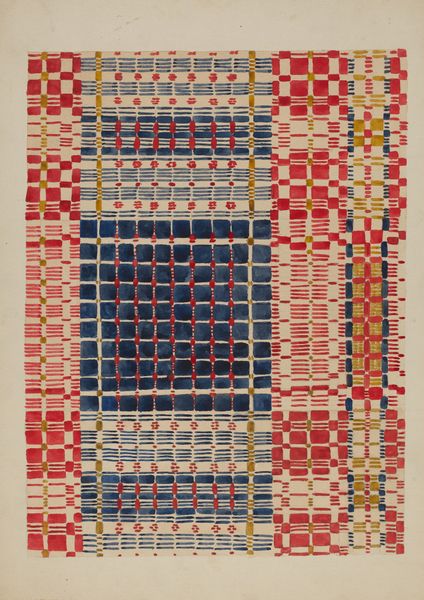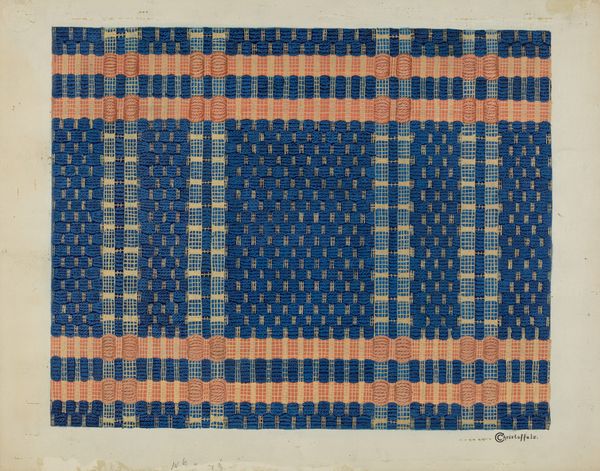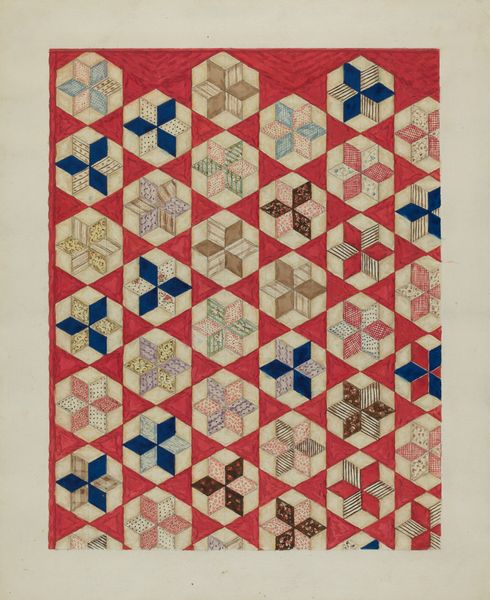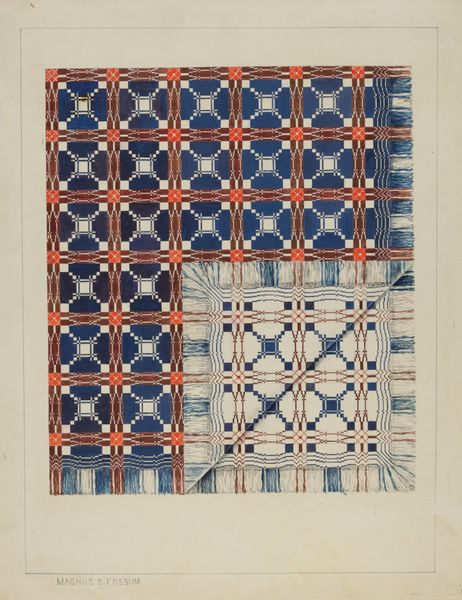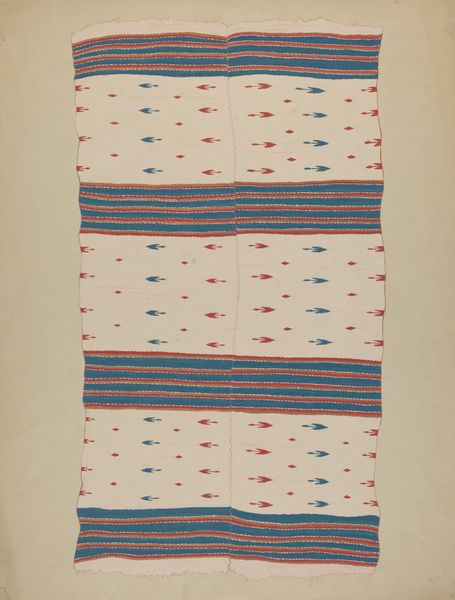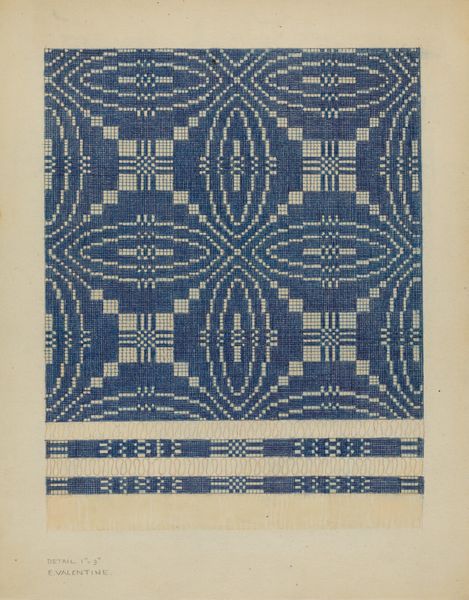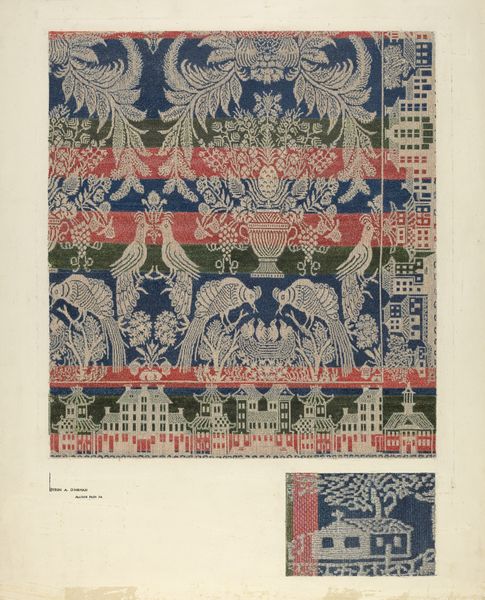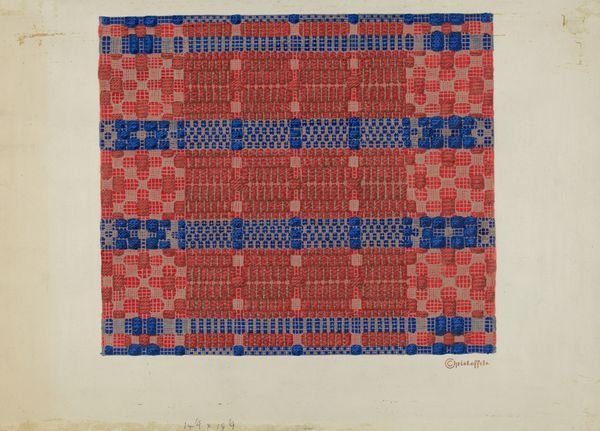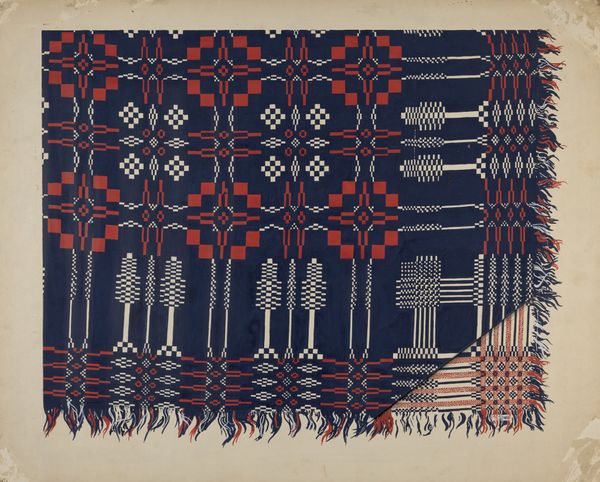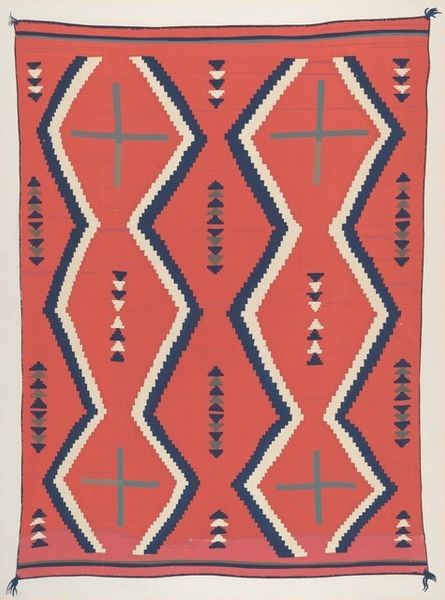
drawing, textile
#
drawing
#
textile
#
pattern design
#
fabric design
#
textile design
Dimensions: overall: 50.8 x 46 cm (20 x 18 1/8 in.) Original IAD Object: 75" long; 68" wide
Copyright: National Gallery of Art: CC0 1.0
Curator: Here we have a drawing for a textile, a coverlet designed by J. Howard Iams in 1936. What are your initial thoughts on this design? Editor: It's visually striking, although the color choices feel a bit muted. I'm curious about the materials; are we looking at the actual coverlet or just the preparatory design? Curator: This is just the drawing, but it does offer insights into the aesthetics of the era. Think about the 1930s, the Great Depression – there was a real interest in handmade items and folk art. How do you think this piece reflects that? Editor: Definitely see a connection there. There's a sense of utility blended with ornamentation, which reminds me of the resourcefulness required by makers during that period. Look at the repetition of simple motifs—the floral patterns and stripes, probably easy enough to execute on a loom at home. Curator: Exactly! These patterns were meant for a mass audience. Factories wanted fresh ideas that reflected the era, and in design contests or fairs they sought folk ideas to mass produce it with accessible technology and offer affordable beauty to consumers during hard times. Editor: I am immediately wondering: were there specific textile mills this design was intended for? Did this person often submit designs for textiles, what's the background here? The regularity suggests industrial production, and how could we explore the tension between mass manufacturing and hand-made esthetic. Curator: Finding that direct connection to specific manufacturers can be difficult. But what’s interesting is that J. Howard Iams participates to popular aesthetic choices of that era. Textile production in the United States was heavily industrialized, especially in certain regions, feeding the desire to uplift collective morale through accessible comfort goods. Editor: So, how was this coverlet actually made? I’m curious about the dyes, the weave… I mean, what are the physical properties of the actual thing, beyond the representation? Curator: Sadly, lacking the physical object makes it harder to assess the direct techniques employed. Editor: Well, looking at the broader picture, it's really fascinating to see how design ideas circulated and were adapted during that period of great upheaval. Thanks for drawing my attention to the relationship between consumption, aesthetics, and materiality in this piece. Curator: Likewise, this artwork really highlights the cultural narrative of the time. Looking closely reveals more than you might expect at first glance.
Comments
No comments
Be the first to comment and join the conversation on the ultimate creative platform.
